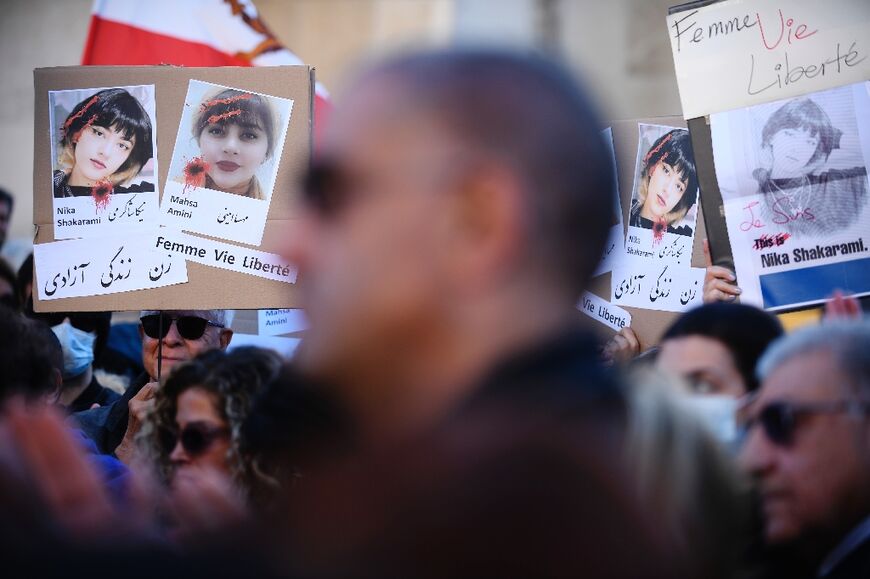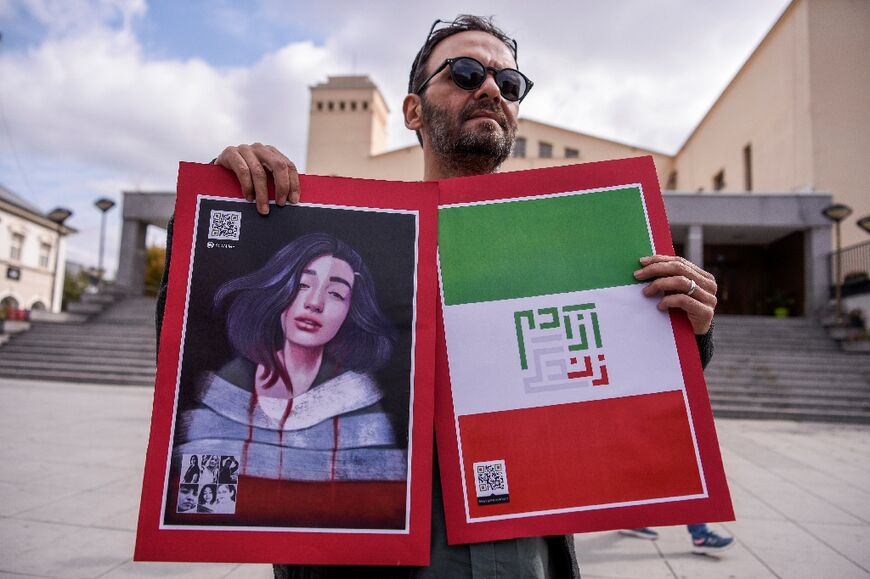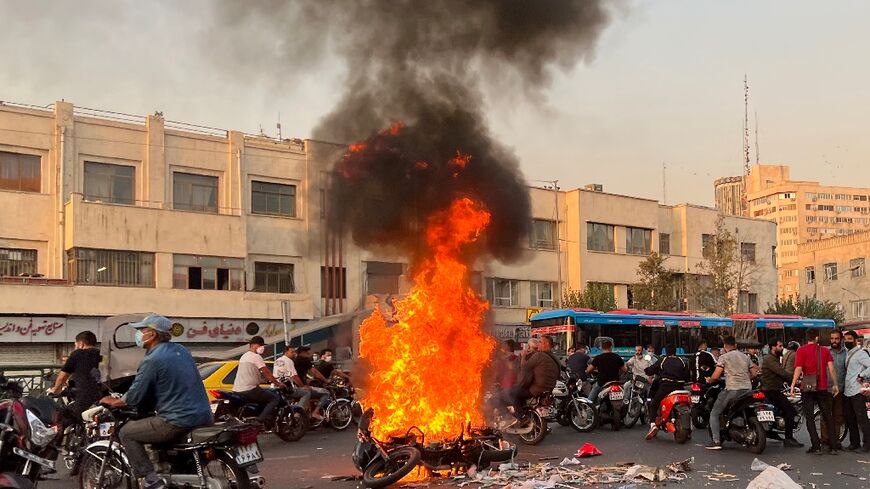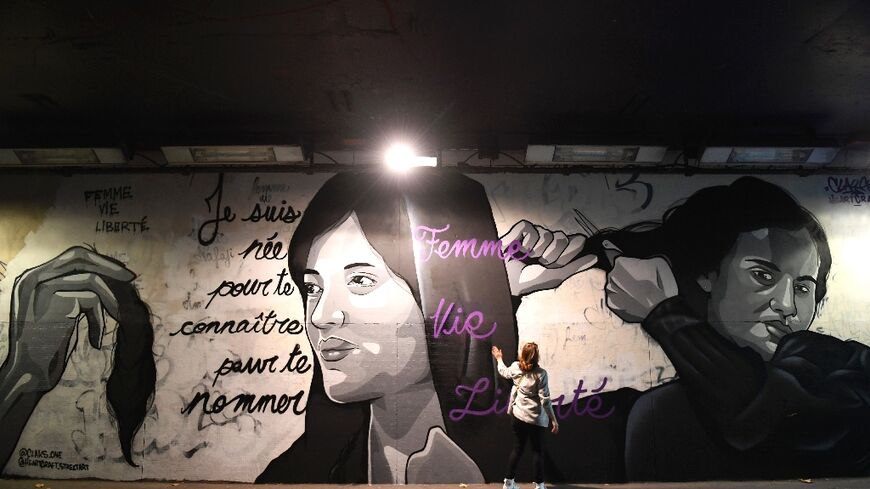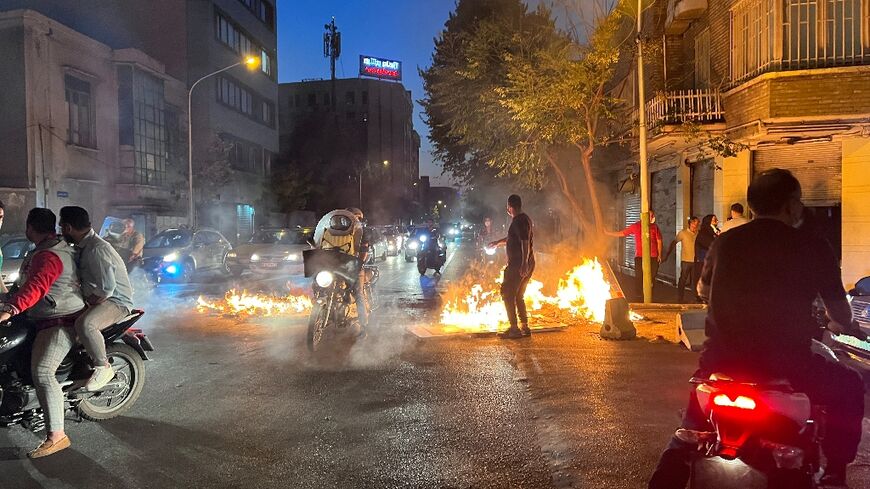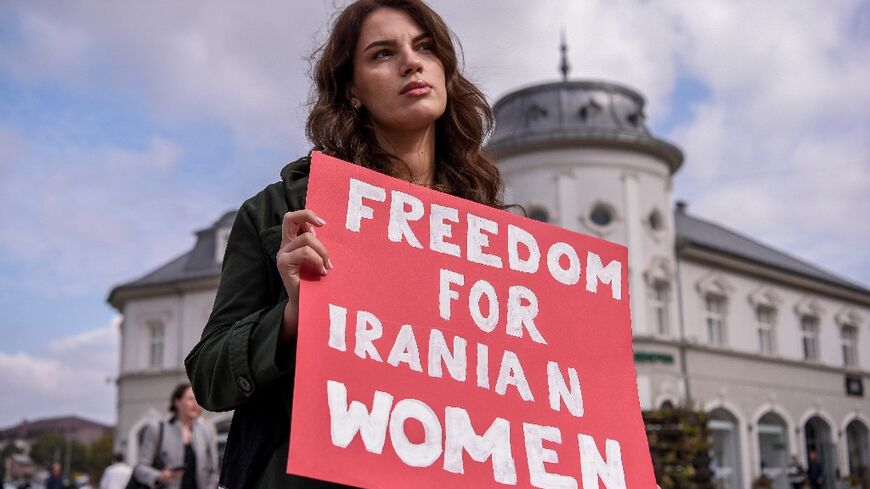Children caught up in Iran demos face 'psychological centres'
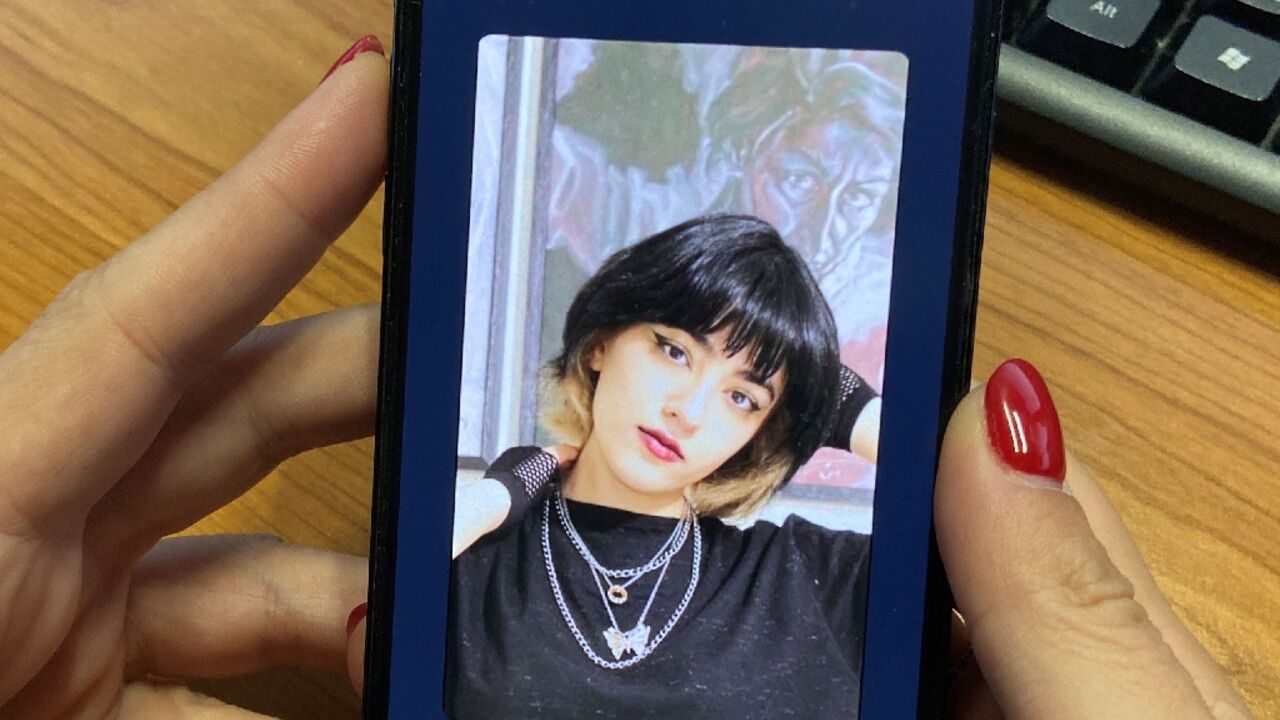
Dozens of Iranian children have been killed and hundreds detained after being caught up in protests over Mahsa Amini's death, some of them even ending up in "psychological centres", it has emerged.
Iran has been rocked by a month of demonstrations driven by public outrage over Amini's death after the morality police arrested her for an alleged breach of the Islamic republic's strict dress code for women.
Fed up over the lack of change, the country's Gen-Z teens -- those born before 2010 -- have come of age and been credited for their bravery while facing off with the security forces.
"Iranian Zoomers are frustrated/angry with the status quo and aren't afraid to say it online and push outside the red lines" of the Islamic republic, tweeted Holly Dagres, an Iran specialist at the Atlantic Council think tank.
Night after night, young women and schoolgirls have taken to the streets with their hair exposed and fists raised, chanting "Woman, life, freedom" and "Death to the dictator".
Youths involved in the protests have paid with their lives, however, with the US-based rights group HRANA naming at least 26 dead children -- three of them as young as 12.
Iran's Children's Rights Protection Society said at least 28 had been killed, including many from the underprivileged province of Sistan-Baluchestan.
It said families were being "kept in the dark" about the whereabouts of their children, and that their cases were going ahead without proper legal representation.
- 'Unrelenting brutal crackdown' –
Amnesty International said Iran's "unrelenting brutal crackdown" involved an "all-out attack on child protesters" that had cost the lives of at least 23 minors.
But the overall number of children killed is widely believed to be much higher.
Human rights lawyer Hassan Raisi said some arrested children were being held in detention centres for adult drug offenders.
"This is very concerning," he was quoted as saying by the London-based Iran Wire news website.
Anyone "under the age of 18 must never be held with any criminal over 18... This is a legal requirement, not a recommendation".
"Around 300 people between the ages of 12-13 and 18-19 are in police custody," he said, without elaborating.
Among those slain in the protests are Nika Shahkarami and Sarina Esmailzadeh -- 16-year-old girls whose deaths triggered an outpouring of grief in Iran and around the world.
Protesting children have also been arrested inside classrooms, said Iran's Education Minister Yousef Nouri.
"They are not that many," he told Shargh newspaper in response to a question on the number of schoolchildren arrested. "I can't give an exact number."
Nouri said those detained were being held in "psychological centres".
The aim, he said, was "correction and rehabilitation" to stop them from becoming "anti-social characters".
- 'Video games' -
Iran's Teachers' Union blasted the minister in a statement that said it "strongly condemns these unwise actions that will lead to education centres becoming like military camps".
The teachers called on "all those involved, including the unfit education minister, to quickly release the jailed protesting pupils and colleagues of ours that have been arrested for supporting the protests".
The United Nations children's agency UNICEF said this week it was "extremely concerned" over reports of "children and adolescents being killed, injured and detained" in Iran.
Despite the crackdown and blocks on smartphone apps popular among Iranian teens, such as Instagram and TikTok, internet-savvy youths have still managed to get out videos of their protests.
They have adopted new tactics for the street too.
Those heading out to protests wear masks, leave phones behind to avoid being tracked, and take extra clothes to change into if they are marked by paintballs that the security forces deploy to identify them later.
Revolutionary Guards deputy commander Ali Fadavi told Iranian media on October 5 that the "average age of the detainees from many of the recent protests was 15".
"Some of the teenagers and young adults arrested used similar key phrases in their confessions, such as likening street riots to video games," he was quoted as saying by Mehr news agency.
Concerns over the influence of video games have also been raised by other officials.
Cleric Aboulfazl Ahmadi, head of a provincial organisation linked to the morality police, said Iran's enemies "have banked on" the country's teenagers and that "some video games were designed to bring the youth to the streets at times like these".


